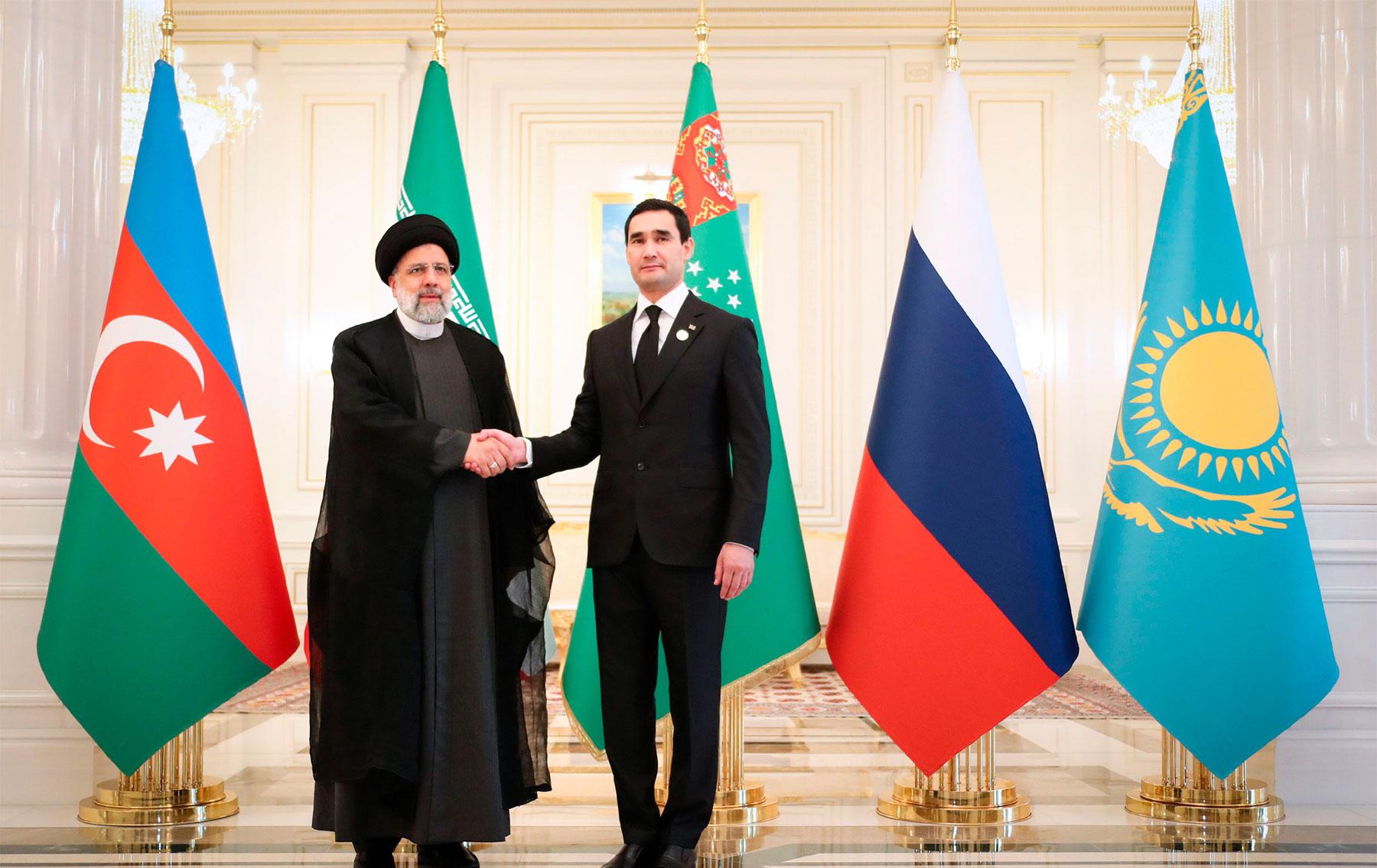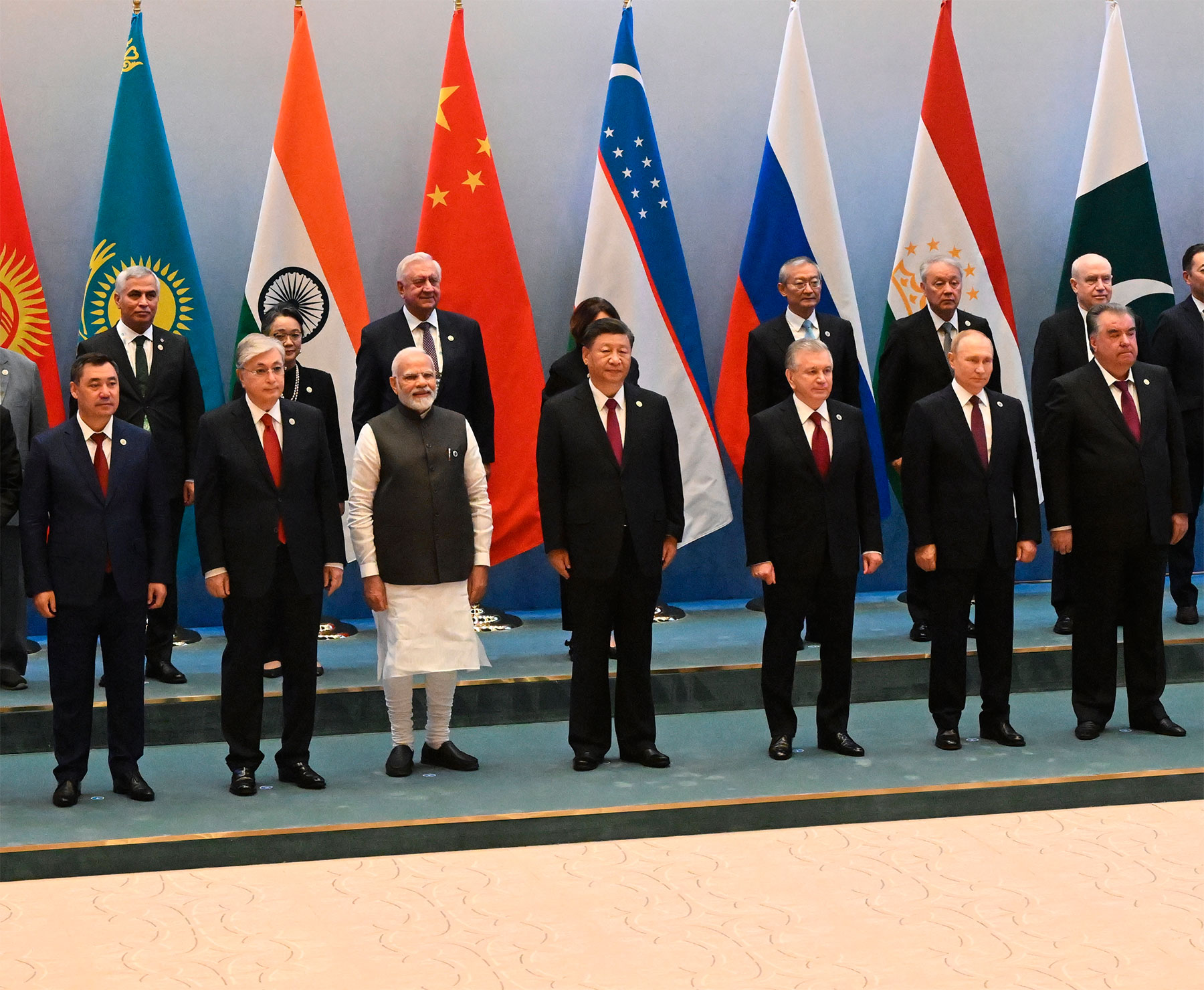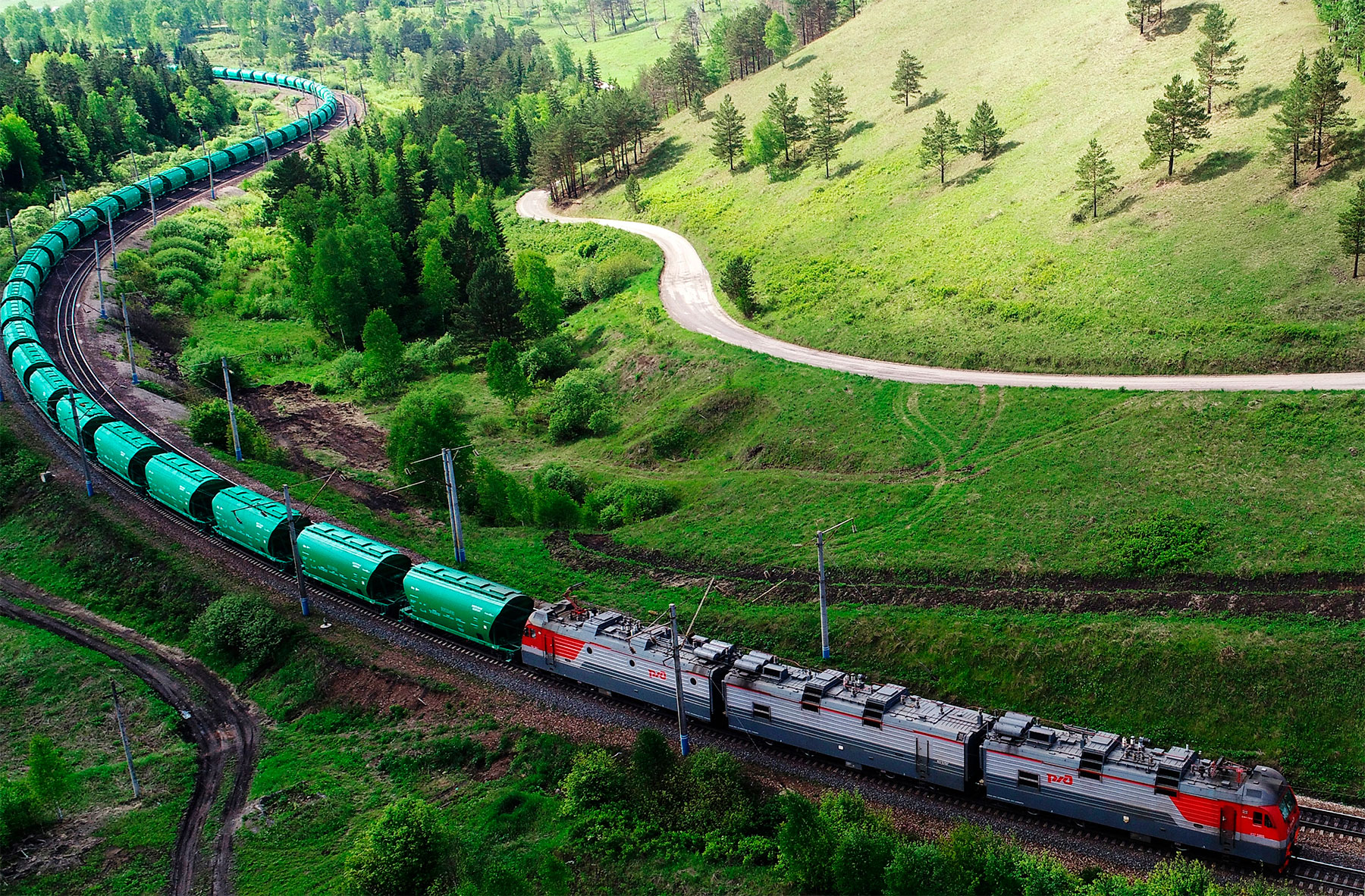The North-South International Transport Corridor (ITC) project was developed back in 1999 by Russia, Iran and India. In that year, transport companies of these three nations signed a general agreement on export-import transportation of containers along the international transport corridor Russia – Caspian Sea – Iran – India – Sri Lanka. The main goal of the project was reducing the time of cargo transportation between Russia and India, as well as developing an alternative route to the Suez Canal in Egypt, which would be shorter and more convenient. The main advantages of the North-South transport corridor over other routes are the cutting of distances by half or more, as well as reducing the cost of container transportation, compared to the cost of container transportation by sea.
Iran views the project as very important for its political as well as socioeconomic development. First of all, the Iranian authorities aspire to pursue a policy independent of the West in the region (unlike many countries of the Persian Gulf, for example). Tehran tries to develop cooperation with the largest nations of the East (India and China) as its top priority, as well as with Russia and some other Moslem states. From this perspective, such a complex and multifaceted project as the North-South ITC, if brought to fruition and highest operational effectiveness, will serve as a demonstration of increasingly intensive cooperation between the major Eurasian nations resisting the aggressive and expansionist policies of the West and playing an increasingly important role in global geopolitics.
Besides, Iran expects serious benefits from a purely economic standpoint. Once completed, the ITC will become the most important cargo transit center on the route from Europe to Asia. Russian and Central Asian goods will also gain wide access to Iran’s Persian Gulf ports, which will lead to a sharp increase in their cargo turnover and, in general, to revitalization of maritime trade in the country as well as intensive economic growth in the areas adjacent to the ports, which are currently not in the best economic condition.
Still, some Iranians, not objecting to the very idea of a transportation corridor in principle, nevertheless oppose the construction of the Resht-Astara section, proposing the route from Central Asia and the Caspian ports instead. In particular, they have some concerns about Azerbaijan’s unfriendly stance towards Iran (nevertheless, in our opinion, it would be all the more advisable to consider this corridor as an incentive to overcome existing problems in bilateral relations).
Aparently, the implementation of the North-South international transportation corridor may not only lead to great economic benefits for Iran bolstering its internal stability as well as Tehran’s authority in both the region and on the international arena, but it may also solve some of its foreign policy problems, leading to stabilization of the relationship with Azerbaijan.
Recently, the development of the North-South international transportation corridor has been widely discussed in Russia, due to its economic benefits, as well as reorientation of the Russian economy from West to East. This route is the shortcut from Russia to India. It was first used by the Russian merchant Afanasy Nikitin back in the 15th century, and then later during World War II for military supplies to the USSR under Lend-Lease. One of the key countries straddling this route is Iran, which is very interested in the project, hoping to leverage it for improving its foreign policy and economic position. It is worth considering the prospects of this project for Iran.
Background of North-South ITC project and its main characteristics
The North-South International Transport Corridor (ITC) project was developed back in 1999 by Russia, Iran and India. In that year, transport companies of these three nations signed a general agreement on export-import transportation of containers along the international transport corridor Russia – Caspian Sea – Iran – India – Sri Lanka. The agreement provided for the approximate transit time of containerized freights and approximate rates, distributing the responsibilities between the parties, and outlining the organization of transportation. Russia ratified it in 2002. The main goal of the project was reducing the time of cargo transportation between Russia and India, as well as developing an alternative route to the Suez Canal in Egypt, which would be shorter and more convenient. The main advantages of the North-South transport corridor over other routes (in particular, over the sea route through the Suez Canal) are thought to be the cutting of distances by half or more, as well as reducing the cost of container transportation, compared to the cost of container transportation by sea.
Gradually, countries such as Kazakhstan, Belarus, Armenia, Azerbaijan, Syria, Oman, and Bulgaria as an observer joined the agreement on the ITC inauguration.
The project had been reviewed and coordinated for quite a long time before its implementation commenced. It’s only in the recent decade, when Russia chalked out its policy of rapprochement primarily with countries of the East in its foreign policy and economy that they started vigorously putting the project into life.
The ITC route is 7,200 km long – from St. Petersburg to the Indian port of Mumbai (Bombay) – anticipating the operation of rail, sea and river transport. The North-South ITC involves the use of several routes for cargo transportation: Trans-Caspian – through the Russian ports of Astrakhan, Olya, Makhachkala; Eastern – direct railroad connection through Kazakhstan, Uzbekistan and Turkmenistan with access to the Iranian railroad network; and Western (Astrakhan – Makhachkala – Samur, and further on through Azerbaijan to Astara station). For the latter route to become operational, it is necessary to complete the railroad leg Resht – Astara in Iran, which is complicated by the unevenness of railroad gauges (in Iran it is 1,435 mm, while in the ex-Soviet space it is 1,520 mm). All these routes also pass through the Iranian port of Bandar Abbas on the Persian Gulf.
On May 17, an intergovernmental agreement was signed in Tehran between Russia and Iran on the construction of the 162 km long Resht-Astara railway line, which is scheduled for completion by 2027. As a result of this route being launched, the transit of freights over the western corridor of the North-South ITC can be increased to the level of 30 million tons, whereas the overall cargo traffic of the ITC will have to increase from 15 million tons today to 41-45 million tons by 2030, and reach 100 million tons in the longer term. Russia is going to invest 1.3 billion euros in the construction of this line. Once the above-mentioned section of the railroad is completed, a through railroad corridor will be formed from Russia to the southern ports of Iran, which will open direct access to the Persian Gulf for Russian freights.
Work on the project shifted into higher gear in April 2021 following the accident in the Suez Canal, which cost the world economy dear. In June 2021, a full-scale container train traveled over the North-South ITC route for the first time. In July 2022, the first freight rail train with 39 containers departed from Chekhov near Moscow to Bandar Abbas, finally reaching India. After at least six pilot trains, Russian Railways launched regular monthly container trains along this route starting in October 2022. Nevertheless, due to numerous technical problems, including the lack of up-to-date river-sea merchant ships of high capacity in Russia and Iran, the infrastructure of Russian ports in need of modernization, mediocre quality of service, etc., the North-South ITC is still far from being fully operational, and its long-term expansion and improvement is necessary.
The North-South ITC opens access to the seaports of Iran for Russia, as well as to the markets of Pakistan, India and Southeast Asia. These are the countries and regions that are rapidly growing economically, and interaction with those markets will help Russia find a pillar for further development of its economy in the situation of a de facto blockade by the West. In the long term, the transportation of goods over the North-South corridor between Russia and India may take less than 25 days, while traditional routes take almost 40 days. The cost of shipments between the two countries is also going down (by about 30%). In the long run, the North-South ITC may become an alternative to transportation not only through the Suez Canal, but also through the Mediterranean Sea and the Bosporus Strait, as well as to the partially similar One Belt, One Road project promoted by China. Russia can supply a whole range of goods along this route: food, textile products, household appliances, and electronics.
The importance of North-South ITC for Iran: interest and outlook
Iran views the project as very important for its political as well as socioeconomic development. First of all, the Iranian authorities aspire to pursue a policy independent of the West in the region (unlike many countries of the Persian Gulf, for example). With this in mind, Tehran tries to develop cooperation with the largest nations of the East (India and China) as its top priority, as well as with Russia and some other Moslem states. From this perspective, such a complex and multifaceted project as the North-South ITC, if brought to fruition and highest operational effectiveness, will serve as a demonstration of increasingly intensive cooperation between the major Eurasian nations resisting the aggressive and expansionist policies of the West and playing an increasingly important role in global geopolitics.
Besides, Iran expects serious benefits from a purely economic standpoint. Once completed, the ITC will become the most important cargo transit center on the route from Europe to Asia. Russian and Central Asian goods will also gain wide access to Iran’s Persian Gulf ports, which will lead to a sharp increase in their cargo turnover and, in general, to revitalization of maritime trade in the country as well as intensive economic growth in the areas adjacent to the ports, which are currently not in the best economic condition. In general, Iran’s economy has been going through hard times since 2018, which has sparked massive and numerous protests. For example, inflation in May 2023 was 54,6% year-on-year, including the food inflation of 78.5%, with unemployment in the first quarter of this year standing at 9.7%. Therefore, leveraging the North-South ITC, the Iranian authorities expect to significantly improve the economic situation in the country and thereby reduce the risks of internal political turmoil. The official Iranian press refers to this project as “the golden route to Iran’s economic prosperity.”
In 2022, Iranian Vice President Mohammad Mokhber suggested that profits from the transit of goods via Iran could bring the country more money than the sale of oil and petroleum products. At the moment Iran earns about $1 billion on transit, but the government of Ebrahim Raisi expects to increase these proceeds by 20 times. Such record results will supposedly be achieved through the accelerated construction of railway infrastructure, expansion of port capacity and introduction of freight cars, to dramatically ramp up the amount of rail transit (currently 90% of transit through Iran is carried out over motorways). Indeed, Iran’s potential in this area is enormous: it is estimated that the Republic could increase transit volumes to 200 million tons. In 2019, this figure was only 7 million tons, and it has moreover been on a downward trend over the past few years, since in 2017 it stood at 12 million tons.
As for the views of Iranian experts, Mandana Tishehyar is one of the key champions of Iran’s deeper relations with Russia and India in the transportation realm. In her opinion, vibrant development of the ITC would help neutralize the influence of China’s New Silk Road project, which is looked upon particularly negatively by New Delhi. Iran, due to its geographical location and very good relations with the two nations, can act as a link between Russia and India. Shuaib Bahman, Head of the Institute for Strategic Researchers in the Contemporary World and a specialist in Eurasian studies, also believes that the ITC will play a positive role in Iran’s economic development. According to him, Iran, with its unique geographic position, can be a bridge between North and South, as well as between West and East. Mr. Bahman believes that if Iran takes advantage of these opportunities, including by building infrastructure for the North-South ITC, it will be able to improve its regional and international standing by providing a safe, less costly shortcut (compared to other routes) to transport goods; as a result, Iran will strengthen its grip on the region. He also noted that the West tried to exclude Iran from the regional pipeline system and tried to hinder Russian-Iranian economic cooperation, but it failed to achieve its goals – bilateral cooperation has only gained a firmer foothold, thus contributing to the slackening of Western sanctions pressure on both states. The expert also believes that the North-South ITC and China’s One Belt, One Road project, rather than interfering with each other, on the contrary, are complementary, so Iran will be able to benefit from both projects, amping up its influence as a transit country.
Yet, one cannot argue that far from all politicians and intellectuals in Iran are in support of the North-South transport corridor project. Among the project’s opponents are probably the pro-Western opposition to the Islamic regime, as well as some (albeit few) figures within the Iranian political establishment who for some reason do not quite trust Russia (negative historical memory due to the Russo-Persian wars of the 19th century, etc.).
Furthermore, some Iranians, not objecting to the very idea of a transportation corridor in principle, nevertheless oppose the construction of the Resht-Astara section, proposing the route from Central Asia and the Caspian ports instead. First, they have some concerns about Azerbaijan’s unfriendly stance towards Iran (nevertheless, in our opinion, it would be all the more advisable to consider this corridor as an incentive to overcome existing problems in bilateral relations). Second, they are apprehensive of certain social and environmental problems that the construction of the Resht-Astara railroad section may cause, since according to the plan it should pass through several nature conservation areas, as well as through a large number of rice fields, which will lead to the alienation of some agricultural plots. This will entail the need to pay a compensation to farmers. However, it is likely that, subject to an increase in outlay on the project, the railroad could be built without affecting the protected areas.
In the context of possible foreign policy benefits of the project under consideration for Iran, it is also worth considering the likely changes in Iranian-Azerbaijani relations, which are currently in a deep crisis. Thus, the Azerbaijani Embassy in Tehran suspended its work following the murder of a guard on January 27. Both Baku and Tehran are constantly accusing one or another person of spying for the neighboring country. Significant discontent in Tehran is caused by the consolidating Azerbaijani-Turkish alliance, as well as Azerbaijan’s close relations with Israel, Tehran’s “enemy number one” in the Middle East. In general, there are many contradictions and concerns between the two nations. It would seem that the situation is virtually hopeless. However, given that the North-South ITC will bring undoubted benefits to both states and that smooth relations between the neighboring countries through which it passes are desirable for the successful operating of this route, both Tehran and Baku hope for at least formal reconciliation and gradual smoothing over contradictions and disagreements.
In this regard, it is worth mentioning that on June 5, on the margins of the Non-Aligned Movement’s meeting, Iranian Foreign Minister Hossein Amir-Abdollahian met with Azerbaijani President Ilham Aliyev, to discuss relevant issues of bilateral cooperation, including the development of the North-South transportation corridor. They agreed on the earliest possible inauguration of the South-Araz corridor, which should connect two parts of Azerbaijan (East Zangezur and Nakhchivan) through Iran. Mr. Abdollahian also promised President Aliyev that all those responsible for the tragedy in the Azerbaijani embassy in Tehran would be punished. It is quite likely that we will see significant moves towards the warming of Iranian-Azerbaijani relations in the very near future. What’s more, Russia is very much interested in reconciliation between the parties, and so it can act as a mediator in resolving bilateral contradictions.
With all that, the implementation of the North-South international transportation corridor may not only lead to great economic benefits for Iran bolstering its internal stability as well as Tehran’s authority in both the region and on the international arena, but it may also solve some of its foreign policy problems, leading to stabilization of the relationship with Azerbaijan.







